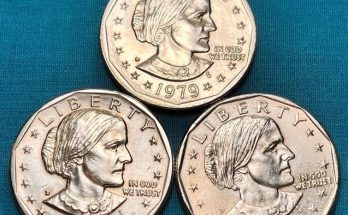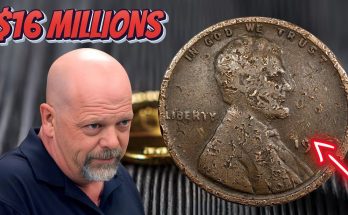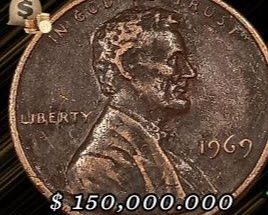If you’ve ever wondered whether the loose change sitting in your pockets, jars, or drawers might be worth more than face value, this video is made just for you. Today, we’re diving into one of the most surprising and misunderstood coins in modern American coinage: the 1966 Lincoln penny. While most people assume common-date pennies are only worth a penny, the truth is that some 1966 pennies have sold for hundreds, even thousands of dollars, with a few rare examples fetching $6,000 or more at auction. So why are some worth just a few cents while others can shock collectors with eye-popping values? Let’s break down the reasons, the errors, the varieties, and what YOU should look for in your own pocket change.
Why 1966 Pennies Are Special
Even though 1966 wasn’t generally known for major design changes or rare mintmarks, the year stands out because the U.S. Mint was under extreme pressure during the mid-1960s coin shortage. To speed up production, the Mint removed mintmarks from coins dated 1965–1967. That means every 1966 penny has no mintmark, regardless of whether it came from Philadelphia, Denver, or San Francisco.
But that also means quality control dropped during these fast-paced production years. As a result, 1966 pennies are notorious for striking issues, planchet problems, and die deterioration, all of which can create collectible errors and varieties. And if your coin happens to be one of the sharply struck, beautifully preserved examples—especially in high Mint State grades—its value can skyrocket.
Why One Penny Is $6 and Another Is $6,000
In the image above, you can see two 1966 pennies. They may look similar at first glance, but they are worlds apart when it comes to value.
-
The penny on the left represents a typical 1966 coin—either circulated or lightly worn. These usually sell for $0.05 to $6, depending on condition.
-
The penny on the right, however, shows exceptional strike quality, deeper luster, and almost no marks. A 1966 penny in this condition can be graded at the upper ends of the Mint State (MS) scale, such as MS-66 or MS-67 Red. Because high-grade survivors from this year are incredibly rare, these coins can bring $1,000 to $6,000+ at auction.
High-grade examples are valuable simply because they were extremely difficult to produce during this rushed production period—and even harder to preserve for nearly 60 years.
1966 Penny Errors Worth Money
In this video, we’ll show you some of the most profitable 1966 penny errors you should be checking for in your everyday change. These include:
🔍 1. Double Die Obverse (DDO)
Some 1966 pennies exhibit doubling on the date, the word “LIBERTY,” or the motto “IN GOD WE TRUST.” While not as famous as the 1955 or 1972 doubled dies, certain DDO examples can still fetch $50 to several hundred dollars, depending on the strength of the doubling.
🔍 2. Double Die Reverse (DDR)
Although less common, some reverses show doubling on lettering such as “ONE CENT” or “UNITED STATES OF AMERICA.” Collectors love strong DDRs, and any dramatic example can sell for $100 to $500+.
🔍 3. Off-Center Strikes
If your 1966 penny was struck off-center—meaning the design is noticeably shifted to one side—it may be worth $50 to $200, depending on how far off the strike is and whether the date is still visible.
🔍 4. Die Cracks, Cuds, and Retained Cuds
Because dies wore down quickly during the mid-1960s, many 1966 pennies show cracks or raised bumps caused by die breaks. Larger die breaks known as “cuds” can command $20 to $150 or more, especially if dramatic.
🔍 5. Struck on Wrong Planchet Errors
These are the holy grails of 1966 pennies. If a penny was struck on the wrong metal—such as a dime or foreign coin planchet—values can soar into the hundreds or thousands of dollars.
🔍 6. Full Red (RD) High-Grade Examples
Coins are graded by color: Brown (BN), Red-Brown (RB), or Red (RD).
A bright red penny in high grade—especially MS-66 or above—can command $1,000 to $6,000, even without an error.
How to Check Your 1966 Penny at Home
You don’t need expensive equipment—just a few simple tools:
-
A 5x–10x magnifier
-
A decent desk light
-
A soft cloth
-
Optional: a scale or caliper
-
Optional: a coin album or flips to protect potential finds
Look closely at the date, LIBERTY, the motto, the rim, and the edges. Small imperfections or unusual features may indicate a valuable mint error.
Why You Should Check Every Penny
Coin collectors know that gems can appear in the most unexpected places—old jars, glove compartments, thrift stores, or pocket change from grocery stores. Since 1966 pennies were produced in huge quantities and circulated for decades, there’s still a good chance that valuable varieties are hidden in plain sight.
Final Thoughts
Your 1966 penny might be worth only a few cents—or it could be a rare high-grade example or error worth hundreds or even thousands of dollars. With so many varieties, mistakes, and condition differences, 1966 is a surprisingly exciting year for Lincoln penny collectors. Watch the full video to see detailed examples, comparison photos, and close-ups of the exact errors and features you should be searching for.
Don’t forget to like, share, and subscribe if you enjoy coin-hunting content and want to learn more about valuable coins hiding in everyday change!



